Introduction

It seems every two years we see an interesting ultra wide angle FE lens by Laowa. First the Laowa 15mm 2.0 Zero-D FE at Photokina in 2016 and now 2 years later the Laowa 10-18mm 4.5-5.6 C-Dreamer FE at Photokina 2018.
The Voigtländer 10mm 5.6 E held the crown for being the widest rectilinear lens, now we have a zoom lens starting at 10mm but going all the way up to 18mm by Laowa. Is the image quality good enough to get this over the Voigtlander?
Last Update: 100mm filter holder added, handling section updated, more samples added, conclusion updated (03/27/19)
Sample Images





You can find most of the shots in this review in full resolution here.
Contents
- Introduction
- Sample Images
- What the optical designer Mr. Li says about his lens
- Specifications / Version History
- Disclosure
- Focal length overview
- Handling / Build Quality
- Use with filters
- Vignetting and colorcast
- Sharpness
- Distortion
- Sunstars
- Coma correction
- Flare resistance
- Chromatic aberrations
- Alternatives
- Conclusion
- Sample images
- Further Reading
- Support Us
What the optical designer Mr. Li says about his lens
“The range of usage of a 10mm lens is limited, yet there are people who want to have this focal length available, me included. Therefore I decided to design a zoom lens starting at 10mm, that is more convenient to use than a 10mm prime lens. I made use of the narrow flange focal distance of mirrorless cameras to design a 10-18mm zoom lens as compact as possible. We got asked a lot about more defined sunstars, so this was another design goal for this lens. With the 37mm rear filter and a 100mm front filter holder we also want to give the photographers the opportunity to use this lens for an expanded range of applications.”
Specifications / Version History
I am reviewing a pre-production model here which has the following specifications:
- Diameter: 70mm
- Field of view: 102° to 130° (diagonally)
- Length: 81mm
- Weight: 499g
- Filter Diameter: 37mm (rear)
- Number of Aperture Blades: 5 (straight)
- Elements/Groups: 14/10
- Close Focusing Distance: 0.15m
- Maximum Magnification: ~1:5.5
- Mount: E-mount
The lens is now available from the manfucaturer’s homepage, amazon.com and B&H (affiliate links) and the price is $849.
Disclosure
The Laowa FE 10-18mm 4.5-5.6 C-Dreamer pre-production model was kindly provided free of charge by Venus Optics / Laowa for reviewing purpose for a few weeks.
Focal length overview
The overview corresponds to the actual shots taken at the different focal length markings.
Handling / Build Quality

So far all the Laowa lenses I reviewed had very nice build quality and this holds true for this zoom lens as well. Most parts of the outer casing seem to be made from metal and the lens feels very dense and solid. Markings are engraved and filled with paint.
The lens is also surprisingly small and only slightly bigger than the Zeiss Loxia 21mm 2.8:
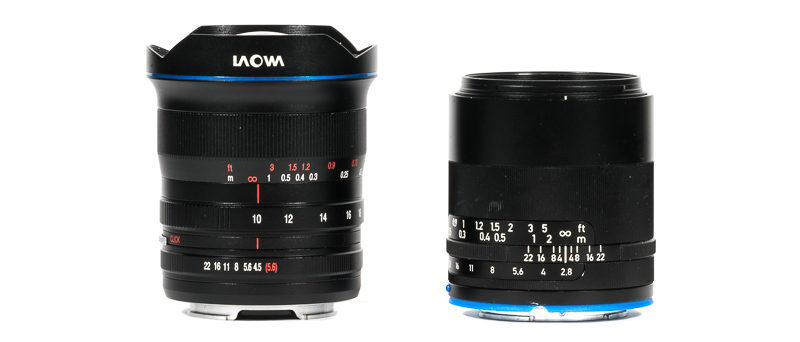
The focus ring has (for my taste) pretty much perfect resistance; a little more than the Zeiss Loxia lenses, maybe a tad less than the Zeiss ZM or Voigtlander lenses. The throw of the focusing ring is about ~100° from the minimum focus distance (0.15m) to 1.0m and only ~5° from 1.0m to infinity. because it is such a wide and slow lens this hasn’t really been an issue.
Another good news (especially for those among you into filming): while I cannot tell you whether this is a true parfocal design, it handles as one – even at minimum focus distance – so you can adjust the focal length without loosing focus on your subject.
Infinity is slightly before the infinity symbol on my sample.
The aperture ring has equidistant one-stop click-stops and it takes about 35° from f/4.5 to f/22.
This lens incorporates a small lever for de-clicking the aperture ring. It is very close to the aperture ring and it might be possible to turn it by accident.
Unlike the Zeiss Loxia or the the Voigtlander E-mount lenses the Laowa does not feature electronic contacts to communicate with the camera, so there is no Exif data transmitted. Compared to primes this is more of an issue to me on a zoom lens, as it makes using correction profiles for vignetting or distortion quite a bit harder.

As it is a variable aperture zoom you won’t always know the exact aperture value you are at. On the aperture ring next to the 4.5 there is a 5.6 in brackets, meaning at 10mm your maximum aperture is f/4.5 but at 18mm only f/5.6. Personally, this doesn’t bother me, but if you are using an external calculator when having an ND filter attached it should definetly be considered.
Use with filters
Rear Filter

This lens features a 37mm rear filter thread. The lens comes with a clear filter which is part of the optical formula so you should not remove it, only replace it with another filter if desired. This only really makes sense for ND filters. Despite the obvious disadvantages I tried using it with a slim polarizer but even the slim one was too thick, so I wasn’t able to mount the lens on camera anymore.
The optimal thickness for the rear filter is 1.1 mm, but it will also work with filters up to 1.5 mm.
100mm Filter Holder

In collaboration with H&Y Laowa also offers a 100mm square filter holder for this 10-18mm lens. Let me say upfront I am quite amazed they managed to come up with a 100mm holder without vignetting for a lens this wide (for the Voigtlander 10mm 5.6 HWH E I needed 150mm wide filters).
But they decided to partner up with H&Y with their magnetic filter holders and this may or may not have been a good idea, let me explain why.

To be able to use your existing filter with this systems you need to equip them with a 150x100mm or 100x100mm frame. Bought separately these frames are 35$ so if you already have set of filters this might be an expensive experience. These frames have glue on the inside so you also cannot easily remove and reattach them.

As this lens is only a review sample (and the holder ships with a 150x100mm frame whereas I needed a 100x100mm frame) I just stuck my polarizer in there which worked good enough. But you cannot do this with strong ND filters as there will be light leaks.
Generally I like the idea of the magnetic holders, but mixing it with “normal” holders is pretty much a no go as the filters won’t be compatible with both holders at the same time. So either you get the magnetic frames for all your filters and replace your holder for your other lenses with a magnetic one as well or you need to buy the filters you want to use with this lens a second time. I don’t like either of these options.
Now to the holder itself. As you can see in the first picture of this paragraph it consists of 3 elements:
– square filter holder
– front ring
– rear retention ring

My biggest gripe with this holder: you have to remove the lens from the camera to attach it as you can see from the picture above. That front ring is a loose part so it is pretty fiddly to do it in the field without dropping something.

The next problem: when you have tightened the retention ring at the back (which you should, as otherwise you will see parts of the holder in the corners of the frame at 10mm) you cannot rotate the holder anymore. To be able to rotate it you need 2 hands again: one to grab the square filter holder, the other to unscrew the retention ring from it.

You may have guessed it by now: when using this holder in the field for a week I didn’t exactly manage to fall in love with it. The handling simply leaves quite a bit to be desired.
If you are the kind of photographer who sets it up once and leaves the camera with lens untouched for quite some time this probably won’t bother you.
But if you are like me, active, changing position and lenses often, it probably will.
Which really is a pity as it is actually pretty great to be able to use 100mm filters on such a wide lens.
Vignetting and colorcast
| 10mm | 18mm | |
|---|---|---|
| f/4.5 | 3.20 | - |
| f/5.6 | 2.90 | 1.60 |
| f/8.0 | 2.60 | 1.50 |
| f/11 | 2.60 | 1.40 |
| f/16 | 2.60 | 1.40 |
With small ultra wide angle lenses in the past we have already seen that vignetting figures are pretty high and won’t improve that much on stopping down, this is also the case here.
Vignetting is strongest at the wide end but it is quite comparable to the Voigtlander 10mm 5.6, at 18mm it in fact shows less vignetting than the Zeiss Batis 18mm 2.8.
Also similar to the Voigtlander UWA primes and the other wide Laowa primes (12mm 2.8 and 15mm 2.0) this lens showed some green color cast in the corners which is more of an issue on the wide end.
The visibility depends highly on the subject and is more pronounced with very bright backgrounds. This is a real world shot where it is quite obvious:

You can check out my article How to: Correcting Color Cast in Lightroom where I explain different methods to fix this.
Sharpness
infinity



It is clear from the crops above this lens won’t be breaking any resolution records and considering the small size and the ambitious focal length range I also didn’t expect it to. The lens also shows some field curvature, in the shots above I focused for the midframe which gave pretty good across frame results but not best center results.
Stopped down the zoom might actually have more resolution at 10mm than the Voigtlander 10mm 5.6 E, but I am pretty sure the 12mm 5.6 E will surpass it at 12mm, the Laowa 15mm 2.0 clearly surpasses it at 15mm (I checked) and the Zeiss Batis 18mm 2.8 will clearly surpass it at 18mm.
The centering quality of my sample is quite okay, especially for a zoom lens. All the corners look pretty similar at the focal lengths I checked (10, 15 and 18mm).
close focus
10mm @ 0.15m
14mm @ 0.15m
18mm @ 0.15m
100% crops from center (unless stated otherwise), A7rII
With the minimum focus distance of just 0.15 m you can get really close to your subject (so close that you are shading the subject with your lens). In the center the performance is always really good at all focal lengths, even at the maximum aperture. When placing your subject close to the borders the resolution never reaches levels as good, not even on stopping down considerably.
Placing your subject in the midframe close to the thirds of the frame gives decent results at most focal lengths though.
Distortion
Unlike the 15mm 2.0 and the 12mm 2.8 this zoom lens is not part of Laowa’s “Zero-D(istortion)” line and indeed it shows more distortion than these two prime lenses.
At around 14-15mm the lens is pretty much distortion free, but at 10mm we have noticeably wavy barrel distortion and at 18mm wavy pincushion distortion. Considering the fact this lens does not come with electronic contacts this is very unfortunate as applying correction profiles is a tedious task.
I created distortion correction profiles for 10mm, 12mm, 14mm, 16mm and 18mm (the focal lengths marked on the zoom ring) for infinity, you can find them here.
(In Lightroom go to “Edit” -> “Preferences” -> “Presets” -> “Show Lightroom Develop Presets” then go to “LensProfiles” create a subfolder named “1.0” and place the presets from my zip file in that folder, restart Lightroom and they will show up under “Sony” and work for Raw files only)
Sunstars
10mm
14mm
18mm
100% crops from center, A7rII
One of my complaints regarding former Laowa lenses were the not so well defined, rather fuzzy sunstars (see my review of the 2/15 or 2.8/12). This is the first Laowa lens where nice sunstar rendering was a design criteria and the lens uses 5 straight aperture blades (instead of 7) that yield well defined 10-stroke sunstars.
This is a highly subjective topic so you might want to have a look at this article and decide for yourself, what you prefer.
There is one thing to notice though: at 10mm you will see sunstars already at the maximum aperture of f/4.5. At the 18mm end at the maximum aperture of f/5.6 the opening is perfectly round and therefore you won’t get sunstars unless stopping down.

Coma correction
10mm
14mm
18mm
100% crops from extreme corner, A7rII
Because this is a rather slow lens it is not exactly meant to be used for landscape astrophotography. Still it is worth checking out the coma correction for city shots.
As corner resolution isn’t exactly great I did not expect to see a great performance here either and the crops confirm this. Only at the long end when stopping down two stops this aberration mostly goes away.
Flare resistance

The lens is not free of lens flares, it shows worse performance compared to most modern primes with comparable focal lenghts. Compared to other ultra wide angles zooms it has to be said none I know of shows really good performance, but it is hard to judge without a direct comparison.
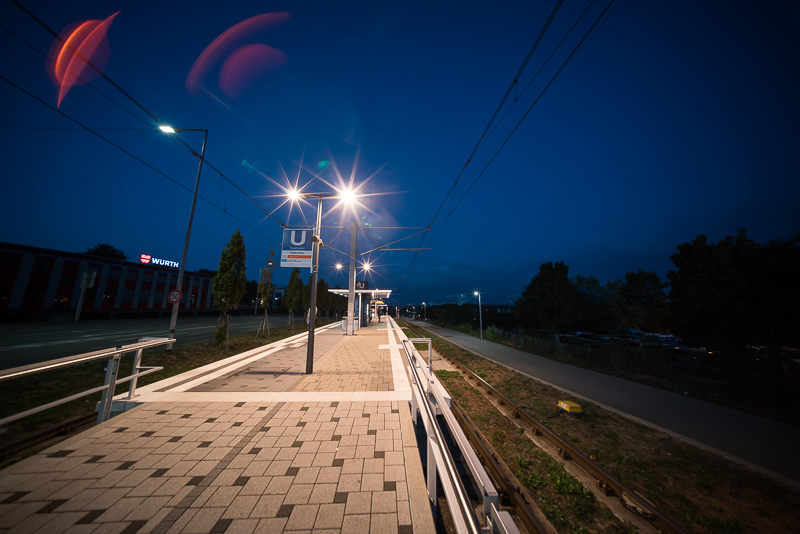
After using the lens for quite some time I can say the behaviour described below is quite typical for this lens. At 10mm you will often encounter this combination of red pentagon and crescent around strong point light sources. If you change to a longer focal length it will often not be inside the frame anymore, so I would rate flare performance slightly better at the long end.
Of course recomposing sometimes helps, but then sometimes it doesn’t. You should also pay attention to keep the front element clear of dust or other dirt, as this will easily lead to additional artifacts.
Chromatic aberrations
lateral
Sony A7rII | Laowa FE 10-18mm 4.5-5.6 | 10mm | f/11 | CA 100% crop before/after extreme corner
The lateral CA are strongest at the wide end, they can still be corrected pretty easily in post with one click.
longitudinal
As this is a very wide and rather slow lens longitudinal CA (loCA) are nothing to worry about.
Alternatives
Vogitlander 10mm 5.6 E HWH:
If you want the 10mm field of view this is your only other option right now (Samyang showed a DSLR 10mm f/3.5 XP at Photokina 2018 which is not available yet).
In terms of resolution, vignetting and also sunstars they are quite comparable and the zoom is only slightly bigger and heavier (+120g). In terms of flare resistance the Voigtlander prime fares noticeably better and distortion is lower.
What follow is my personal take on this comparison:
I was using the Voigtlander since release and while it gave me a few cool shots it really is more of a special effects lens (like a fisheye): there are only so many subjects and compositions that work well for a 10mm lens. So in the end – per trip – it only gave me 1 or 2 good shots and apart from that I carried it for nothing. This is why I am inclined to give this 10-18mm zoom a try: being able to zoom up to 18mm might make it a lens that gets more usage. I only have to find out whether the lens flares are an issue in actual shooting or only in staged review shots.
Sony FE 12-24mm 4.0 G:
I haven’t used this lens myself yet, so what follows is a summary of the impressions I got from sample pictures and other review sites that I trust.
I cannot stretch enough how different the field of view of 10mm is compared to 12mm. The Sony lens is also noticeably bigger, so it is not very surprising it is noticeably better in terms of resolution (especially in the corners). Vignetting and distortion are also high on the Sony lens, but easier to correct due to electronic contacts. In terms of flare resistance both do not knock it ouf of the park for me, but without doing side by side comparisons I cannot tell you which one is better.
It really comes down to whether you want the 10mm field of view or not. If not for most the Sony is probably the more convenient choice then.
Laowa 12mm 2.8 Zero-D:
If you don’t just need wide but also fast you should have a look at this lens.
Voigtlander VM 12mm 5.6 UWH M39:
If you want really wide and/or really compact but you are on a tight budget this is still worth a look and also gave me some nice pictures.
Conclusion
good
|
average
|
not good
|
The main selling points of this lens are the compact size and the widest focal length of 10mm. Laowa managed to produce a zoom lens that starts at 10mm – and at 10mm the resolution and vignetting figures look quite comparable to that of the Voigtlander 10mm prime – yet it is only slightly bigger and heavier (+120g) and you can zoom in all the way up to 18mm.
Laowa decided to do some things differently here compared to Sony with their latest UWA zooms: the emphasize is not on resolution but on giving you the widest possible lens in a small package, sunstars and usability with filters. Whether these main points appeal to you or not depends on your personal preferences.
If you are interested in a lens starting at 10mm but want something more flexible than a 10mm prime this lens might be for you.
If on the other hand you think you get a smaller and wider Sony FE 12-24mm f/4.0 G in a smaller package you will be disappointed, the 10-18mm won’t match it in the overlapping focal length range in terms of resolution and contrast.
The lack of exif data is quite a nuisance in a lens where electronic corrections (distortion and color cast) are necessary in many shots. I was using the lens mostly at fixed values of 10, 14 and 18mm to make post production a bit easier.
The biggest disadvantage for me is the flare resistance. With the sun in the frame I encountered ghosting and other artifacts quite regularly. Whether this bothers you depends a lot on what you shoot, but if this is something that bothers you I recommend to stick to the Voigtlander and Zeiss prime lenses.
Update March 2019: I was keeping this review sample longer than usual as I also wanted to try out the 100mm filter holder (which I received with a bit of a delay) so I can now provide you with a bit of a mid term usage conclusion.
With its small size – despite being a 10-18mm zoom – and the ability to use 100mm filters it is a very convenient lens to use.
This is one of these lenses that don’t test too well but are actually lots of fun to use in the field and I really like many of the shots I took with it.
The Canon TS-E 17mm 4.0L is the LP, the Voigtlander 10mm 5.6 E is the MP3 and this Laowa 10-18mm 4.5-5.6 is Spotify, so decide for yourself: do you want maximum image quality or convenience?
The lens is now available from the manfucaturer’s homepage, amazon.com and B&H (affiliate links) and the price is $849.
Sample images











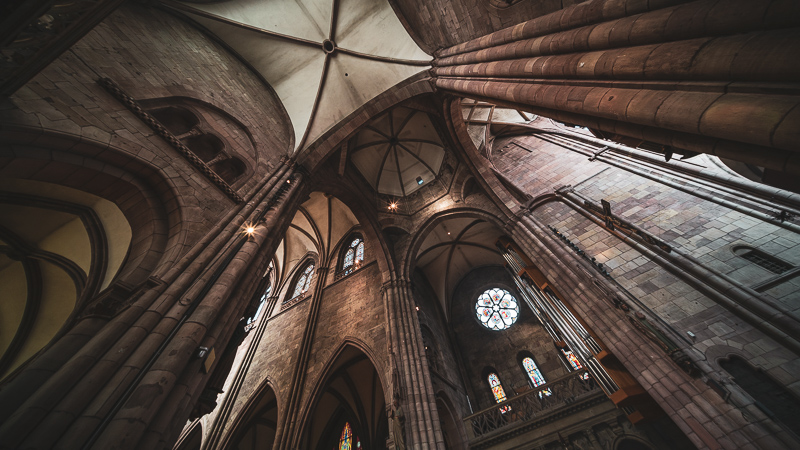


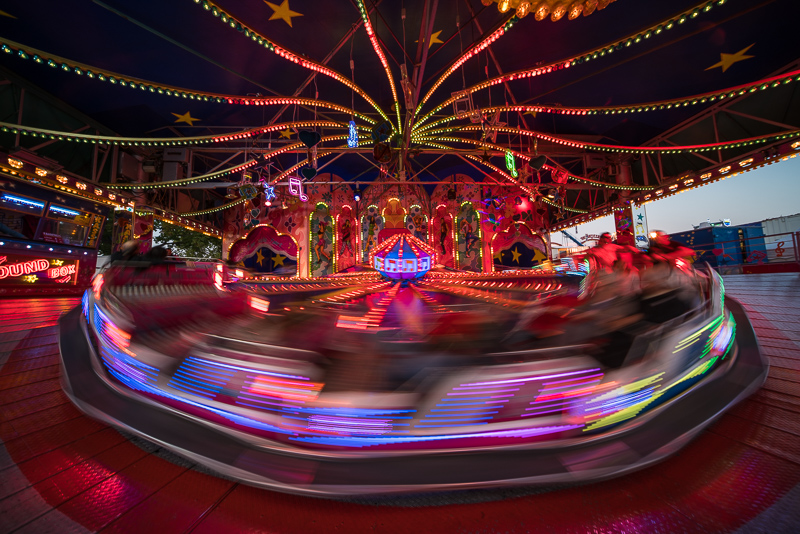

You can find most of the shots in this review in full resolution here.
Further Reading
- Guide to Ultra Wide Angle lenses for the A7 Series
- Review: Laowa 2/105 STF
- Review: Voigtlander 4.5/15 E
Support Us
Did you find this article useful or just liked reading it? Treat us to a coffee!
![]()
![]()
![]() via Paypal
via Paypal
This site contains affiliate links. If you make a purchase using any of the links marked as affiliate links, I may receive a small commission at no additional cost to you. This helps support the creation of future content.
Latest posts by BastianK (see all)
- Review: Thypoch 21mm 1.4 Simera - July 12, 2025
- Review: SLRmagic 50mm 0.95 Hyperprime LM - July 5, 2025
- Full Resolution Pictures getting fixed - July 4, 2025



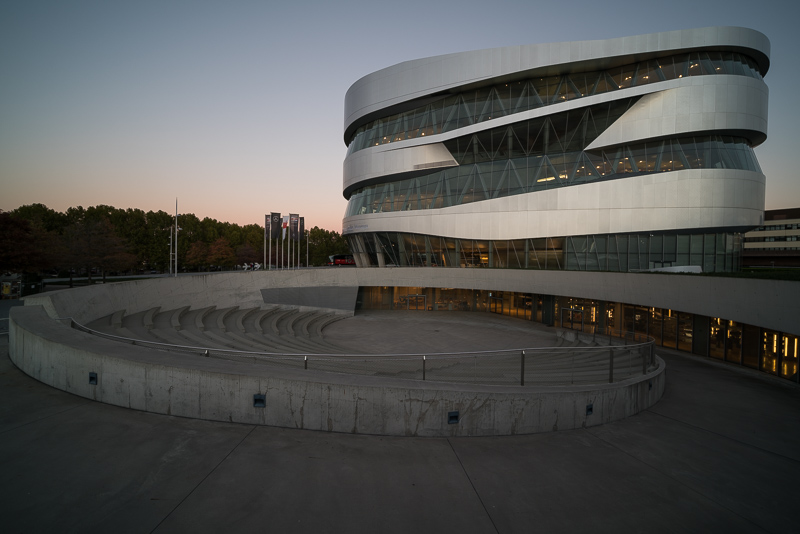










































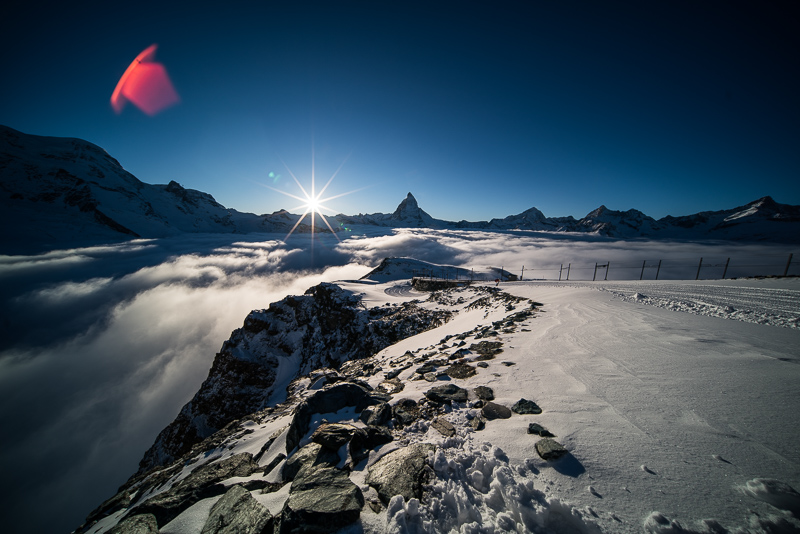



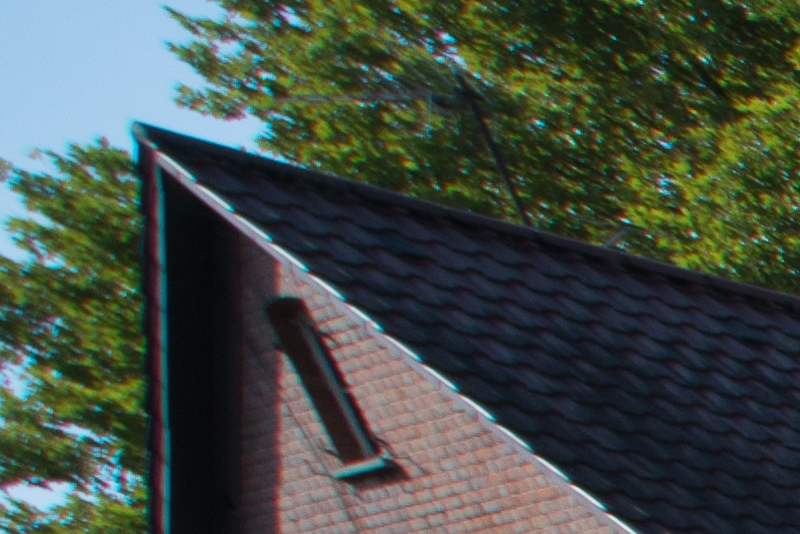

I was wondering, do you still prefer the voigtlander 10 for wide angles vs the Sony 12-24? Trying to decide if it is worth getting to accompany my Sony 12-24. Thanks!
If you want 10mm there are not many options, if you don’t need wider than 12mm you have your answer already 🙂
I was just reading your ultimate wide guide and was wondering that with the introduction of the 12-24, if anyone’s preferences switched. Specifically, from the 10 to the 12-24.
10mm is completely different from 12mm. It is a bit like asking me whether with the announcement of the GM 24-70mm 2.8 the Loxia 21mm 2.8 is now obsolete.
The 12-24mm, I am not personally interested in for several reasons (size, filtersize, flare resistance, AF, sunstars).
But your preferences do not necessarily match mine, so you might come to a vastly different conclusion.
There is no best lens, the best lens is the one that fits your personal needs best (which I obviously know little to nothing about).
All we can do is thorougly review the lenses to make it easier for you to choose.
And THIS is why I’ve had this site as the first in my list of bookmarks for years. Your reviews come across far less as someone trying to sell something, and more of “this is how this lens works for what I do, and how it doesn’t.”
Which, sometimes those suggestions and points are exactly what I’m looking for, and sometimes they’re not. Regardless, I always get the straight story here.
I do have a question on filtersize though, is your objection to just having another size that you may or may not have filters for?
I have a few 150mm square filters, but history showed I only rarely carry them, as they are so bulky.
Also the message I get from many (also professional) photographers I talk to: they are okay with 100mm, less so with 150mm or more.
These big filters take up lots of space in the backpack and the weight also adds up (I am not even mentioning cost here).
There is yet another issue: when the distance between filter and front element is big there is a higher chance to encounter
reflections, and so it already happened to me that the lens itself was reflected in the front filter and caught in the picture.
True enough. I’m a bit of an amateur to say the least. I was thrilled with the Fuji 10-24 and now I just upgraded to the Sony 12-24. It is just hard for me to know if the difference between the 10 and the 12+ on the sony is big enough for me to look into that lens further. The sony is a better lens from what I’ve read, but 10 being wider might offer something substantially different than the sony. That is why I asked. Thanks so much for taking the time to answer.
The flare looks bad… Could be a deal breaker for such a wide lens
I think it’s worth applauding the fact that Venus Optics took suggestions from the high-end Sony user community and implemented a 10-point sunstar. If I recall correctly, they started with a rounded 9-blade aperture. While this lens may not be the sharpest ultrawide option, it’s very cool to see Venus Optics breaking into new territory and being aggressive with their focal ranges and designs.
I’d rather have seen them keep the original aperture design but sunstar folks were probably rather many and vocal.
15cm mfd is interesting, slight bit of a shame there’s no fec. Maybe some mfd bokeh shots? : )
I like the rear filter idea.
Varying and wavy distortion with no exif is as mentioned in the article slightly problematic for certain (architectural) scenes and a slightly less useful SSS.
FEC and the original aperture and I would have felt more inclined to try it out.
you’re a great photographer. it’s pure joy to browse your photos.
Thank you very much, greatly appreciated!
Thanks for this excellent review!
Which polarizer did you try? I think that a circular one would not work anyway (it would be on “backwards”), but a slim *linear* polarizer has a good chance of working, assuming it will fit. Tiffen and Heliopan make them, among others.
It was a Hoya Slim, I doubt anything with a bigger frame than an UV filter will fit.
Was it a circular or linear polarizer? A linear one should be about as thin as a UV since it has only one piece of glass.
Hard to say which would be more convenient, 37mm round polarizer on the back or 100mm square polarizer on the front. Probably the front one, except for storing it and its holder.
Thanks
The circular one is also only one piece of glass, it is the rotating mechanism that takes up space.
And to my knowledge this is also present on a linear polarizer (better be, as it would not be adjustable if not).
Have you tested the Nikon 10.5mm f2.8?
No, but as it is an APS-C fisheye lens I have no idea how it relates to this Laowa zoom.
At first as an architecture photographer i can say what your shots are absolutely amazing!!! By the second im really disappointed about electronic contacts and no exif as a result (((
For the first I thank you, greatly appreciated.
For the second I feel with you 🙁
I downloaded the original files and took a closer look. Were these really ISO100 as there appears to be a lot of noise? Also great images that they are…I’m not sure low shutter speeds of fast moving objects really help us establish what level of sharpness this lens really offers…..
As always you have the sharpness charts for evaluation and the samples to see what this lens can be used for. As vignetting is strong correcting it (as I did in some of the samples) will lead to added noise.
Did you find in your testing that you were shooting at 10mm intentionally to demonstrate the performance at that focal length? Or do you think it was unintentional? It appears from your sample images that at least 50% of them were shot all the way out at 10mm.
I’ve found this to be a trap of wide angle zooms that I tend to always want to push them a little wider or tighter, and usually end up shooting at the extremes. This recently drove my selling the 16-35 GM and purchasing the Laowa 15.
Because of this, I think that the 10mm Voigtlander may be more appealing to me personally.
The focal length being used is always stated under the sample images.
I tend to use it mostly at the ends of the zoom range (10mm and 18mm) with only few shots in between.
My current personal take on the comparison between 10mm 5.6 and 10-18mm 4.5-5.6 can be found in the alternatives section,
but obviously this will vary from person to person.
do you have an idea of general release date and expected purchase price?
Date not yet, price should be US$849.
On the Laowa site, the length is given as 90.9mm, not 81. Which one is correct?
Both are.
81 is measured from bayonet to the front of the hood.
90.9 is including caps.
Thanks Bastian! Since the lens will be available in Z-mount, it’s quite interesting to me, since it seems that with Nikon the short end will remain at 14mm for some time. It would be great if Laowa would offer their existing lenses with Z and R mount too, not just the new designs.
How does it compare to the Voigtländer 12mm E-Mount lens? I have the 10mm and 12mm Voigrländer lenses and I’d like to know if this lens could replace it without a considerable drop in image quality
Slightly worse resolution compared to 12, worse flare resistance.
Thanks Bastian! Amazing review ) Your choice and comments are always like reference for me )
Interesting idea for the rear filter! Not extremely useful, but could be more interesting if developed further (for thicker filters). Now it’s for extra protection, so i suppose that’s nice. Besides ND filters, it could also work nicely with IR (Infrared) filters, assuming this lens is good for IR.
I am wavering between this lens and the Laowa 15 f2 …. any thoughts on the matter, thanks!
The 2/15 is the optically better lens.
Thank you for your reply and thanks for the wonderful reviews!
You are welcome!
1197/5000
Hello, I state that I have the Laowa 1018 lens with Sony A7r3 for about 20 days and I’m noticing several issues in the sides with the focal lengths from 10mm to about 13mm where there is a strong loss of definition if there are already subjects in the frame between the car is 5/6 meters. It seems incredible but in the sides in the most open focal (10mm.) It is really difficult to have something good despite the closed apertures f16 etc. The strange thing that in the shot already under the “my feet” (long side of the shot) everything is perfectly clear while in the sides is all strongly (kneaded) … I also own Laowa 15F2 0D of which has a stunning and incredible quality. I just can not find here.
I also tested it with the Sony a6300 and that has a completely different rendering because it already crops and removes the parts “with problems”. Even the mass is very special and only with the peak you get really good results with close shots naturalemnte, could you help me? In my “portal” I entered several shots have poprio a folder but for the moment I left themhttps: //piergiorgiozuccaro.smugmug.com/organize/The-Showcase-of-new-Shots/Shot-of-the-day-and -blackberries
Waiting thanks …
I cannot access your pictures, but yes, resolution wise it does not come close to the 2/15.
Nevermind that you are a FAR better photographer than me, I’m jealous of all the cool places you’ve been able to go to in the last year or so to take photos.
Keep up the great work!!!!
btw do you think another mfg will ever come out with a holder to work with this that is non magnetic? I’ve been considering a lens in this focal range for a while but am reluctant to purchase another ND filter system.
Thanks for your kind words!
NiSi is offering a 100mm filter holder for this lens without the need to invest in all that magnetic stuff.
BUT it shows slight vignetting at 10mm.
I think only the pins that attach to the built in lens hood are too long and currently try to find out if – in case those were shorter – that holder would also not show any vignetting.
As I don’t have that NiSi holder myself that makes it a bit harder to find out though.
Thanks for another interesting review, Bastian, much appreciated. Here I am going to resort to an argument I have made before, so apologies for the insistence.
Your audio fidelity comparison that delivers the bottom line in performance and price ratio, is an interesting one. I would however insist that with the rather few high performance few options, I believe a review of the Classic Zeiss Distagon 2.8/15 is overdue.
While I agree that among the UWA & WA lenses the fantastic effort of this blog has covered, the Canon 17mm TSE is most likely the better option, I think that considering build quality, performance, speed, weight and especially price, the Zeiss should be the16Bit 44kHz CD alternative option in your comparison. We are of course all waiting for a new UWA delivering to high-resolution 24bit standards by your analogy.
The Distagon Classic option, not the newer Milvus with the latest coatings, the new weather sealed barrel and the -personally – unconvincing rubber focus ring, is now $200 USD below the Canon in price, and some 100gr in weight. It is certainly not a tilt-shift lens, but it’s quite a bit faster, and still sold new.
As in the case of the other Classic Zeiss DSLR lenses, they are smaller, lighter and cheaper than the Milvus lenses, and while coatings, weather seling, ruuber focus ring and barrel design set them apart, optically all except the 3 newer designs, are the same. Most of them have been phased out, but can be found in very good shape, and with luck even mint in box.
The ones still at or below the 500gr mark, that is, lighter than a VC Apo Lanthar 2/65 or a Loxia 2.4/85, are these days compact Zeiss DSLR options, and certainly still worth it in my opinion, considering optical quality, build quality and current price.
I think that if exceptional sacrifices in weight and size re made for exceptional lenses, like many that have been reviewed despite compactness being a specific preference of this fantastic blog, I think that with the current absence of exceptional UWA performers for E-mount, the Zeiss Classic 2.8/15 should fit the exception bill despite its heft.
Just my insistent grain of sand 😉
Cheers!
Thanks for your review Bastian! Is hard to find information and reviews (good ones) about this lens. I am the owner of a Samyang 14 (a good copy of the manual model) and despite of the sunstars and filters, Im very happy with his IQ on a 24mp A7 mark 1. I have tested along with a friends zeiss 16-35 f4 and it have almost identical sharpness at f8-f11
After watching some reviews, i decided to purchase the Laowa 10-18 to have that sweet zoom range in my bag. After reading 3 or 4 reviews I didnt expect to much IQ from this lens (all of then were done with a 42mp sensors)…but sincerely, on a 24mp sensor, I was impressed by the good sharpness of my copy. Its less sharp than samyang 14 f2.8 and zeiss 16-35 f4…but i think that the difference is really small, and Im a pixel peeper guy…
Unfortunately my lens, used on my ex Sony A7RIII, suffered from light leak on the lower left side, not visible with a normal shot but clearly evident during long exposure pictures, it ruined my Bretagne holiday on April, it has been a real pain, once home I returned the Laowa and had back the money and sold the Sony. If someone is interested I can send samples.
Just came across this as the lens is about to be released for the Nikon Z’s and wanted to thank you for an excellent review. Interesting that most of the pictures are from Stuttgart — do you live here by any chance?
The lack of EXIF would probably be a killer for me at that price and I’m not entirely convinced by the IQ away from the centre but it’s a daring effort from an interesting company. For now, I will stick with my Irix 15mm which I just bought a few weeks ago in fact.
I am based in Stuttgart, yes.
I heard that because of the different sensor design this 10-18mm lens shows better corner performance on the Z cameras, but I had no opportunity to test that myself yet.
Hi Bastian. I just purchased this lens, and am seeing the green cast as well. Did you create a radial filter in lightroom that fixes this issue?
Yes, unfortunately depending on camera and focal length you need different settings.
That makes sense, I did not consider that. I will work on building my own profiles then. I appreciate the reply!
Hi
Have you tried to use this lens with the 37 mm rear filter option?
Does the filter holder that Laowa offers for this lens can be adapted to other lenses?
I like this lens but just trying to factor the filter’s cost
Rear filter only really make sense for ND filters, but yes, it works.
Front filter holder can only be used with this lens, for other lenses you need another holder.
The thickness of the flter you mention is the filter glass and not the filter frame, is that correct?
Yes, but the frame also needs to be thin (e.g. Polarizer won’t work).
Hi
You comment about using a slim polariser, but not finding one thin enough. I have – by YSDIGI. BUT, this is a CPL, and a CPL does not work mounted backwards. However, a linear polariser would, but I have failed to fine one. Is there one available anywhere?
Can the glass in your CPL be mounted backwards with the help of a camera spanner? That should make it usable.
Hi Bastian,
ich habe mal überlegt: Wenn ich eine Z System habe (Z6) und einen E to Z Adapter (Shooten;Kipon, TZE, Medadap oder wie sie alle heißen) nutze, DANN habe ich ja 2mm extra. Diese 2mm sollten genug Raum sein, um ein Laowa 10-18mm (Sony E!) an der Z6 MIT CPL Filter nutzen zu können – oder nicht? Natürlich ist das ziemlich blöde jedes Mal das Objektiv abzuschrauben und den POL Filter entsprechend zu drehen, damit der Effekt eintritt.
PS: Danke für diese unheilich tolle Seite! Ich bin durch Zufall auf dich gekommen und hab sofort mal deine Seite favourisert – DANKE für deine Arbeit!
LG Chris
Hallo Chris,
zwei Dinge für deinen Plan gebe ich zu Bedenken:
1. Je nach Adapterkonstruktion hast du möglicherweise trotzdem nicht genug Platz für einen dickeren Filter,
bspw. elektronische Kontakte könnten im Weg sein.
Das hängt davon ab, wie die interne Konstruktion des Adapters aussieht.
2. CPL funktionieren nur in eine Richtung. Mein Verständnis von Optik ist aber nicht ausreichend
um dir zu sagen, in welche Richtung der hinter dem Brennpunkt orientiert sein müsste.
Evtl. müsstest du versuchen einen linearen Polfilter zu bekommen, da sollte das egal sein
oder alternativ einen CPL finden den du auseinanderschrauben und das Glas umdrehen kannst.
MfG
Bastian
Nice review ! Can the relatively thick filter pack of the Sony sensor have a negative influence on the image quality? Since Nikon Z6/7 system has a thinner filter I can imagine that the quality of the images of this lens can be better especially wide open .
If the lens has been designed for exactly that filter stack: no.
Hallo Bastian,
wenn ich Deine Verzerrungskorrekturprofile einsetze habe ich eine starke Aufhellung in den Ecken. Mache ich etwas falsch bei der Anwendung. Installiert habe ich diese wie beschrieben.
Vielen Dank für Deine Antwort.
Heiko
Gibt einen Schieberegler wie stark die Vignettierungskorrektur sein soll, den benutzen bis dir das Ergebnis gefällt.
Vielen Dank für Deine schnelle Antwort. Dann mache ich alles richtig. Vielen Dank nochmal!
There is an easy, cheap way to polarize this lens that I employ – use polarizing foil, a small cut of which only costs around 10$/€.
Cut it just over 37mm sized plus a little tab on top for easy removal. When needed (which isn’t all that often, so I don’t mind it being a bit more finicky), take the lens off and hold it in front of you so that it is placed in the same position as it would be on the camera. Hold the polarizing foil next to it, then look through the foil and rotate until you see the glare/reflection removed. Keeping the position the same, press the polarizing foil on the rear UV filter. Attach lens to camera. Shoot reflection free.
Addendum:
I find that in 2023, with sharpening software being better than ever before, this lens has become a lot more useful – it has become a mainstay in my bag to accompany me with any midrange zoom (10-18mm makes perfect sense with both a 24-70/105 or a 28-70). In the rare instances where the red ghost really bothers me, I just take two pictures and block the sun in one of them, then merge the ghost away in post.
Bastian any thoughts compared to the recent 9/10mm offerings? I have the 10mm f2.8 (thanks to.your review) and was thinking about this as a companion for my 24gm for travel.
Or go the 10mm f2.8 + 16-25f2.8 combo, but lose the f1.4…
Sadly the performance of this 10-18mm is too bad compared to the primes, especially at the long end. I cannot recommend it.